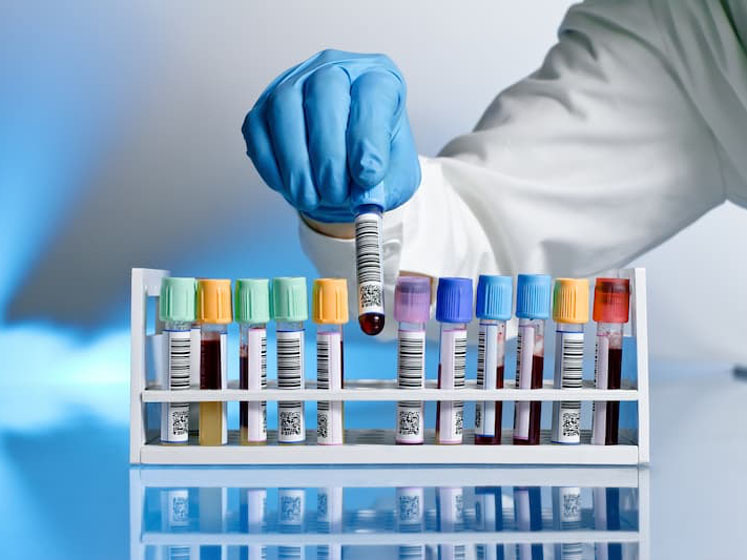A lost or damaged label can throw a lab's work into chaos. Losing this invaluable data means unknown variables now exist, such as sample contents, expiration and impact on any other lab elements. That is why damaged labels will result in destroyed samples and lost work.
Labelling samples accurately in a lab environment requires overcoming many challenges such as xylene and acetone exposure, extreme temperatures and relying on robust solvent compatibility. In addition, chemically resistant labels that can survive harsh environments and materials are vital to an efficient lab environment.
What type of label do you require for testing?
Laboratory labels are not limited to medical use. Specialist laboratory labels are essential for various sectors, such as environmental, agricultural, biotechnology and forensic labs. Each environment will also need labels that meet the solvent compatibility required for these conditions. The ability to remain adherent during freezing, cryostorage or autoclave procedures is as essential as maintaining the data accuracy on those labels.
Different labels for different applications
Not all labels need to be the same, and many processes benefit from choosing a bespoke choice that meets the lab's particular needs. There are situations where the testing process for your samples, or simply the size, will dictate the best label for you.
For example, slide labels can survive –40 °C to +150 °C for extended periods. These labels are designed to continually provide crisp and clear sample identification even after long periods of freezer storage. You'll find slide labels commonly used in pathology, cytology, genetics microbiology and biochemistry.
Customising your labels
Cryogenic laboratory labels come with specifications designed to survive the extreme cold that would quickly destroy conventional labels. Cryogenic labels need to resist temperatures as low as -196 °C.
Additionally, the repeated freeze and thaw cycles combined with other harsh processes will at the very least put your label's solvent compatibility to the test. Nitrogen liquid and vapour can be a hazard for labels also. That's why cryogenic labels are designed to be effective at avoiding delamination during freezing.
Alternatively, some labs require their labels to be high-temperature resistant as well. For example, 100 °C boiling water is typically used for sample preparation, with PCR thermocyclers reaching 110 °C. Steam autoclaving is the most effective part of a lab's sterilisation process, but it can subject the sample labels to temperatures as high as 150 °C.

These two opposites are extremes that lab labels need to survive to have an efficient working lab. Imperfect labels will struggle to hold up to these extremes, resulting in the loss of invaluable and potentially discarded samples.
Label durability in various environments
With the essential role labels provide in a lab environment, the labels used must be durable enough to withstand such environments. These environments can range from high temperatures to below freezing for indefinite periods, and only high-quality labels will be able to handle these extremes.
Wet lab labels
Wet labs are designed for organic or chemical testing. These labs will focus on testing various liquids such as drugs, chemicals and biological matter. The liquid substances being handled will dictate these labs' environments, so a wet lab has to be set up differently from a dry lab and the equipment in it has to be chosen accordingly.
Owing to the liquid nature of the substances tested, the strict environmental conditions are constant across all wet labs, and the only difference is what those conditions may be. In addition, most wet labs work in a cold environment to help preserve the chemicals being worked on.
Therefore, all wet labs will protect their samples with robust refrigeration systems, which puts a lot of demand on high-quality labels that will not deteriorate under such extreme conditions.
Dry lab labels
Dry labs focus on computational or applied mathematical analysis. These labs will explore and test the creation of computer-generated models or simulations. The equipment in dry labs is very different to wet labs; computers and other much larger electronics used do not need the exacting conditions of a wet lab.
However, dry labs will still be equipped with specific requirements, such as temperature and dust control and fire safety, to maintain lab safety despite this more relaxed environment.
Laboratory labels can cover a range of purposes from biotechnology, agriculture, environmental and forensic labs. GSM Barcoding provides labels to suit these sectors with a range of label materials and adhesive solutions. Each sector requires its own detailed, scientific labels that present a range of data such as sample type, container size, storage conditions and application.




